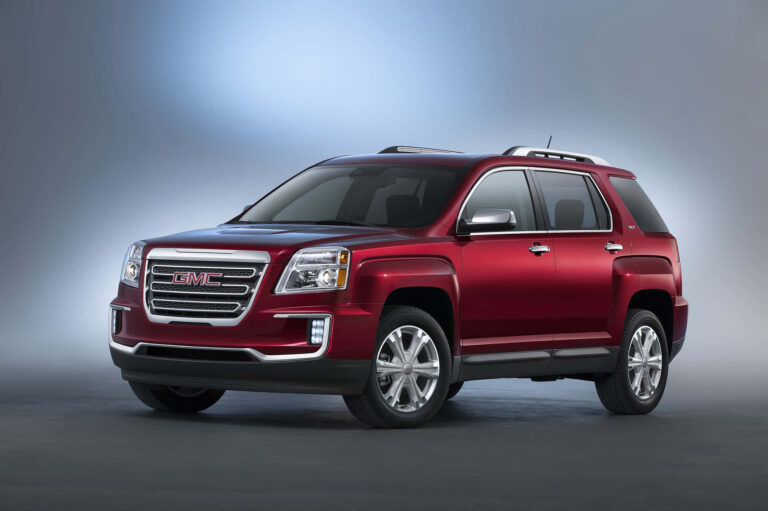How Many Cubic Yards In A Dump Truck Tri Axle: A Comprehensive Guide
How Many Cubic Yards In A Dump Truck Tri Axle: A Comprehensive Guide cars.truckstrend.com
In the world of construction, landscaping, and material transport, understanding the capacity of heavy machinery is paramount. Among the workhorses of the fleet, the dump truck stands out, and for larger projects, the tri-axle dump truck is often the vehicle of choice. But precisely how many cubic yards in a dump truck tri axle can one expect to haul? This seemingly simple question unlocks a complex interplay of truck design, material properties, and legal regulations.
This comprehensive guide will delve deep into the nuances of tri-axle dump truck capacity, providing clarity on volumetric measurements, weight considerations, and practical advice to ensure efficient and compliant material transport for your projects.
How Many Cubic Yards In A Dump Truck Tri Axle: A Comprehensive Guide
Understanding the Tri-Axle Dump Truck
Before we talk about cubic yards, let’s define our subject. A tri-axle dump truck is a heavy-duty vehicle characterized by having three axles at the rear of the truck, typically in a tandem configuration with an additional "pusher" or "tag" axle. This differs from a standard tandem-axle dump truck, which has only two rear axles.
Why the extra axle? The primary reason is weight distribution and increased payload capacity. By spreading the load over more axles, the truck can legally carry more weight without exceeding individual axle weight limits imposed by federal and state regulations. This makes tri-axles ideal for transporting heavier materials like gravel, sand, asphalt, and concrete, or larger volumes of lighter materials, making them a staple on significant construction sites and material supply operations.
Factors Influencing Cubic Yard Capacity
The question of "how many cubic yards" isn’t a fixed number but rather a dynamic range influenced by several critical factors:
-
Truck Body Dimensions (Volumetric Capacity):

The most straightforward factor is the physical size of the dump truck’s bed. The internal length, width, and height of the box determine its maximum volumetric capacity. This is often referred to as the "struck" capacity (level with the top of the bed) or "heaped" capacity (piled above the sides in a cone shape). Tri-axle dump beds typically range significantly in size, from shorter, wider beds to longer, narrower ones. -
Material Density and Weight:
This is arguably the most crucial limiting factor. A cubic yard of feathers weighs significantly less than a cubic yard of steel. While a truck might have the physical space for 20 cubic yards of material, it may only be able to legally carry 12-15 cubic yards of a dense material like gravel or sand due to weight restrictions. Conversely, it could easily carry 25+ cubic yards of a lighter material like mulch or wood chips. Understanding the material’s weight per cubic yard is vital.
-
Gross Vehicle Weight Rating (GVWR) and Gross Axle Weight Rating (GAWR):
These are the legal limits. The GVWR is the maximum permissible total weight of the truck, including its own weight (tare weight) and the payload. GAWR refers to the maximum weight allowed on each individual axle. Tri-axle trucks have higher GVWRs than tandem axles precisely because they distribute the weight over more axles, allowing for greater payloads within legal limits. Exceeding these limits can result in hefty fines, vehicle impoundment, and safety hazards.
-
State and Local Regulations:
Weight limits for trucks can vary significantly from state to state and even within different local jurisdictions. Factors like bridge formulas, seasonal weight restrictions, and specific road classifications can impact the legal payload a tri-axle can carry. A truck legal in one state might be overweight in another, even with the same load. -
Truck Configuration and Condition:
The specific make, model, and age of the truck, as well as its suspension system and tire configuration, can affect its tare weight and ultimately its available payload capacity. A heavier truck (e.g., one with a steel bed vs. aluminum) will have less payload capacity for a given GVWR.

Calculating Cubic Yards in a Tri-Axle Dump Truck
While weight is often the limiting factor, understanding the volumetric capacity is the first step.
Step-by-Step Calculation:
-
Measure the Truck Bed:
- Length (L): Measure the inside length of the dump bed in feet.
- Width (W): Measure the inside width of the dump bed in feet.
- Height (H): Measure the inside height of the dump bed in feet (from the bottom to the top edge).
-
Calculate Volume in Cubic Feet:
- Multiply the three dimensions:
Volume (cubic feet) = L x W x H
- Multiply the three dimensions:
-
Convert Cubic Feet to Cubic Yards:
- There are 27 cubic feet in 1 cubic yard.
- Divide your cubic feet volume by 27:
Volume (cubic yards) = Volume (cubic feet) / 27
Example Calculation:
Let’s assume a typical tri-axle dump truck bed has the following dimensions:
- Length (L): 16 feet
- Width (W): 8 feet
- Height (H): 4.5 feet
-
Volume in Cubic Feet:
16 ft x 8 ft x 4.5 ft = 576 cubic feet -
Volume in Cubic Yards:
576 cubic feet / 27 cubic feet/yard = 21.33 cubic yards
This calculation gives you the "struck" capacity – the volume if the material is level with the top of the bed. Many materials can be "heaped" above the bed, adding an additional 10-25% to the volumetric capacity, but this extra volume must be within legal weight limits.
Typical Cubic Yard Capacities for Tri-Axle Dump Trucks
Given the variables, here’s a general range for tri-axle dump trucks:
- Struck Capacity: Most tri-axle dump trucks can legally carry between 15 to 22 cubic yards of material, when filled level with the top of the bed.
- Heaped Capacity: When considering lighter materials and legal weight limits, some tri-axles can haul 20 to 25+ cubic yards (or even more for very light materials like mulch).
Important Note: While a truck might have a volumetric capacity of 20 cubic yards, it might only be able to carry 12-15 cubic yards of a dense material like sand or gravel due to weight limits (e.g., 20-25 tons). For very light materials like mulch or wood chips, the volumetric capacity is usually the limiting factor, and the truck can often be filled to its heaped capacity.
Practical Considerations and Actionable Insights
- Always Prioritize Weight Over Volume: This cannot be stressed enough. Overloading is illegal, dangerous, and costly. Always confirm the legal payload capacity of the specific truck and the density of the material you are transporting.
- Know Your Material’s Density: Before ordering, get an estimate of the material’s weight per cubic yard. Common estimates:
- Dry Sand/Gravel: ~2,800 – 3,000 lbs/cubic yard (1.4 – 1.5 tons/cubic yard)
- Wet Sand/Gravel: ~3,200 – 3,500 lbs/cubic yard (1.6 – 1.75 tons/cubic yard)
- Topsoil (dry, screened): ~2,000 – 2,200 lbs/cubic yard (1.0 – 1.1 tons/cubic yard)
- Mulch/Wood Chips: ~400 – 800 lbs/cubic yard (0.2 – 0.4 tons/cubic yard)
- Communicate with Suppliers/Haulers: When ordering materials, specify the quantity needed in cubic yards OR tons, and always ask the hauler about the actual payload capacity of their specific tri-axle truck for the material you’re ordering. They are the experts on their vehicle’s legal limits.
- Consider Site Access: Tri-axle dump trucks are large and heavy. Ensure your delivery site has adequate space for maneuvering, turning, and safely dumping the material. Check for overhead obstructions, soft ground, or tight turns.
- Cost Implications: Hauling costs are often calculated per load or per ton/cubic yard. Understanding the true capacity of a tri-axle helps you optimize deliveries, potentially reducing the number of trips and overall transportation costs.
Challenges and Solutions
- Challenge: Overloading: The most common issue. Fines, vehicle damage, and safety risks are severe.
- Solution: Never guess. Always know the material density and the truck’s legal payload. If possible, use a weigh scale, especially for dense materials. Reputable haulers will always weigh their loads.
- Challenge: Miscalculating Material Needs: Ordering too much leads to waste; too little leads to project delays and additional delivery charges.
- Solution: Accurately measure your project area. Use online calculators for specific materials. When in doubt, round up slightly for minor overages, but always within the truck’s capacity.
- Challenge: Varying Truck Specifications: Not all "tri-axle" trucks are created equal in terms of exact capacity.
- Solution: Don’t assume. Always confirm the specific truck’s dimensions and legal payload with your material supplier or trucking company.
Estimated Cost Per Cubic Yard for Common Materials Delivered by Tri-Axle Dump Truck (Sample)
Please note that these figures are highly variable and depend on your geographic location, supplier, material quality, quantity ordered, and current fuel prices. This table provides a sample estimate for illustrative purposes. Haul charges often include a base fee plus a per-mile charge.
| Material Type | Typical Density (lbs/cu yd) | Est. Material Price/Cubic Yard (Ex-Yard) | Est. Haul Charge Per Load (Tri-Axle, up to 20-25 miles) | Total Est. Cost Per Cubic Yard (Delivered) |
|---|---|---|---|---|
| Sand | 2800 – 3200 | $30 – $50 | $150 – $300 (for ~15-20 cu yd load) | $40 – $70+ |
| Gravel (Crushed) | 2800 – 3000 | $35 – $60 | $150 – $300 (for ~15-20 cu yd load) | $45 – $75+ |
| Topsoil (Screened) | 2000 – 2200 | $25 – $45 | $150 – $300 (for ~18-22 cu yd load) | $35 – $60+ |
| Mulch (Wood) | 400 – 800 | $20 – $40 | $150 – $300 (for ~25-30 cu yd load) | $26 – $52+ |
Disclaimer: Prices are highly variable and are for estimation only. Always get specific quotes from local suppliers.
Frequently Asked Questions (FAQ)
Q1: What’s the main difference between a tandem and a tri-axle dump truck?
A1: A tandem-axle truck has two rear axles, while a tri-axle has three. The extra axle on a tri-axle allows it to legally carry a heavier payload by distributing the weight over more points, resulting in a higher Gross Vehicle Weight Rating (GVWR).
Q2: Can I always fill a tri-axle dump truck to its volumetric capacity?
A2: Not necessarily. While a tri-axle might have a volumetric capacity of 20-25 cubic yards, it often cannot be filled to that volume if the material is dense (like sand or gravel) due to legal weight limits. Weight is usually the primary limiting factor for heavy materials.
Q3: How do I know the weight of a cubic yard of a specific material?
A3: Material suppliers or landscaping yards can provide the typical density (weight per cubic yard or ton per cubic yard) for their products. You can also find general estimates online, but always verify with your supplier.
Q4: Is it cheaper to get one large tri-axle load or multiple smaller loads?
A4: Generally, one large tri-axle load is more cost-effective than multiple smaller loads from tandem-axle trucks because the hauling charge (which includes fuel, driver time, and wear-and-tear) is spread over a larger quantity of material. However, this depends on the total quantity needed and the specific pricing structure of the hauler.
Q5: What is "struck" vs. "heaped" capacity?
A5: "Struck" capacity refers to the volume of material when it is level with the top edges of the dump truck’s bed. "Heaped" capacity refers to the volume when the material is piled above the top edges, forming a cone shape, which adds additional volume but must still adhere to weight limits.
Conclusion
Understanding how many cubic yards in a dump truck tri axle is far more nuanced than a simple number. It’s a critical calculation that balances the physical volume of the truck’s bed with the density of the material being transported, all while adhering to strict legal weight regulations. By prioritizing weight limits, knowing your material’s density, and communicating effectively with your suppliers, you can ensure your projects benefit from the efficiency and cost-effectiveness that a tri-axle dump truck offers. Accurate planning is key to avoiding costly fines, ensuring safety, and keeping your construction or landscaping project on schedule and within budget.






